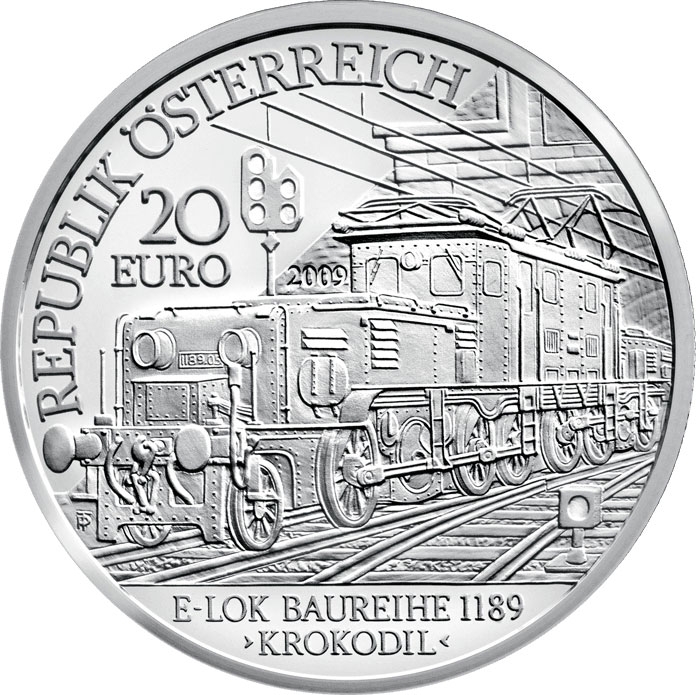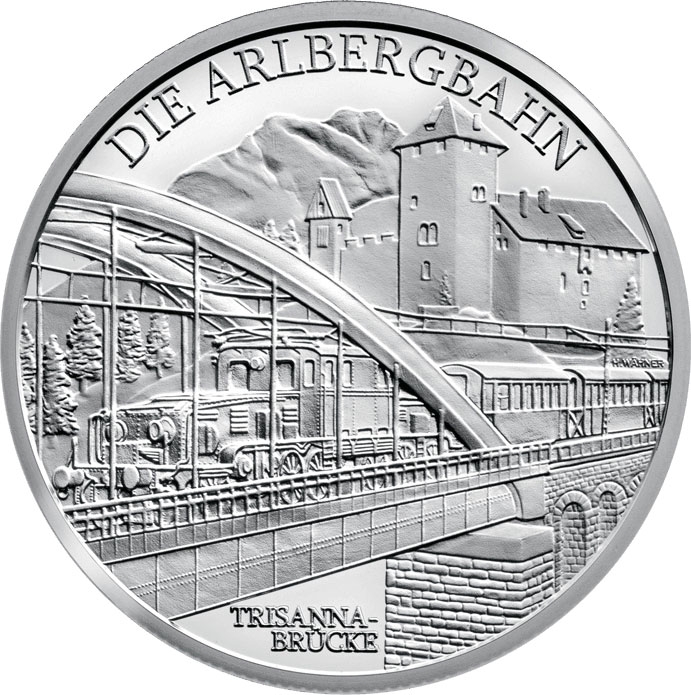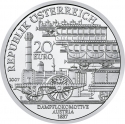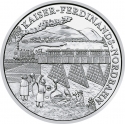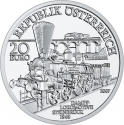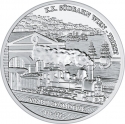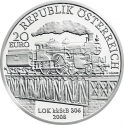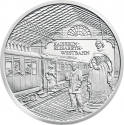You are about to finish your registration. Please check your mailbox (including spam folder). There should be a letter with a confirmation link. Check setting to make sure that your e-mail address is correct.
Send letter againDescription
For more than 125 years the electric railway has been providing the most efficient and environmentally friendly means of transport in Austria. The fifth 20 euro silver coin in the Austrian Railways series pays fitting tribute to the Arlberg Railway, which played a pioneering role in making that electrification happen.
The Arlberg Railway (German: Arlbergbahn), which connects the Austrian cities Innsbruck and Bludenz, is Austria's only east-west mountain railway. It is one of the highest standard gauge railways in Europe and the second highest in Austria, after the Brenner. The 135.7 km line is a highly problematic mountain railway, in part because it is threatened by avalanches, mudslides, rockfalls and floods. It is operated by the Austrian Federal Railways (ÖBB) and frequented by international trains, including the Orient Express.
Today, traffic through the Arlberg railway tunnel has increased considerably, despite competition from road transport through the Arlberg Road Tunnel. This has made it necessary to widen the approach ramps for double tracks. Many long-distance, high-speed EuroCity and Railjet trains ply the route from Vienna to Vorarlberg over the Arlberg.
Each coin comes in a case with a numbered certificate of authenticity.
Obverse

|
In 1882, Emperor Franz Joseph issued the licence for the first permanent electric railway, which ferried excursionists from Mödling outside Vienna to the Brühl valley. By the end of the 19th century a number of local lines and tramways had converted to electric power. The excellent performance of electric engines on steep inclines led to the conversion of the Arlberg Railway in the west of the country to electric power in the 1920s and to the development of suitable locomotives, such as the type 1189. Nicknamed the “Crocodile” due to its green colour and unusual appearance, the 1189 features on the coin’s obverse hard at work on the line, which is considered a masterpiece of Austrian railway engineering. REPUBLIK ÖSTERREICH |
|---|---|
Reverse

|
The coin’s reverse shows a train crossing the Trisanna bridge next to Wiesberg castle, one of the Arlberg Railway’s most beautiful sections. DIE ARLBERGBAHN |
| Edge |
20 Euro
Austrian Railways
The Electric Railway
Subscribe series
KM# 3178
Austrian Railways
The Electric Railway
